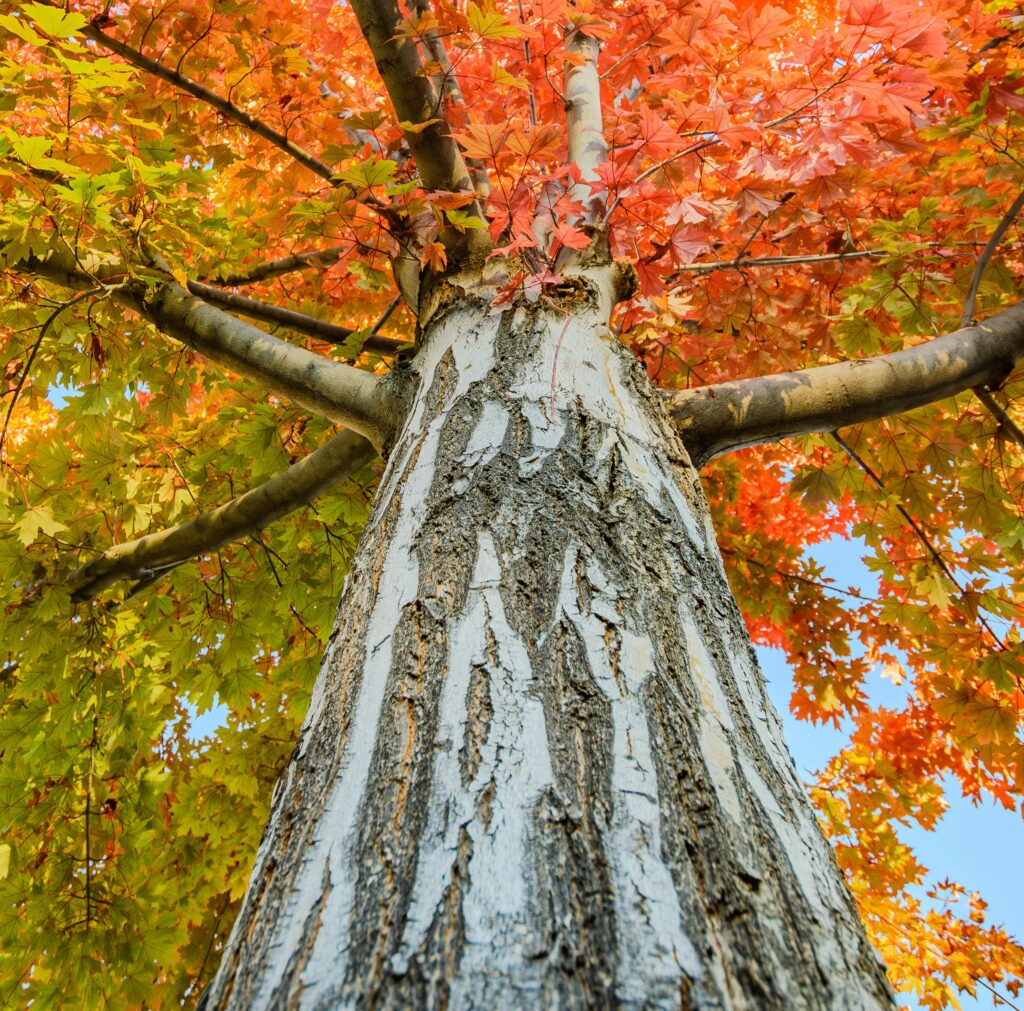When it comes to protecting your home, many homeowners overlook one important detail—tree distance from house for insurance. While trees add beauty, shade, and value to your property, they can also raise serious concerns for insurance providers. If a tree is planted too close, it may pose risks like foundation damage, roof collapse, or blocked gutters. That’s why understanding the right distance trees should be from your home isn’t just about landscaping—it’s about liability, safety, and whether or not your insurance policy will actually pay out in case of damage.
Insurers are increasingly cautious about natural threats, and trees are often on that list. With climate change bringing stronger storms and unpredictable weather, a beautiful oak too close to your roof could become a hazard overnight. Your insurance company might ask how far that tree is from your house before approving coverage—or even worse, deny a claim if they believe the damage was preventable. It is a minor feature that has a significant effect.
In this guide, we’re breaking down the 10 best rules to follow when it comes to tree distance and insurance. Whether you’re planting new trees, buying a home, or simply reassessing your property layout, these tips will help you stay compliant with most insurance requirements while protecting your investment for the long haul.

- 1 1. Plant Large Trees at Least 20 Feet from Your Home
- 2 2. Avoid Overhanging Branches Above Roofs and Gutters
- 3 3. Keep Small Trees at Least 10 Feet from Structures
- 4 4. Check Local Codes and Insurance Requirements First
- 5 5. Never Plant Trees Above Utility or Sewer Lines
- 6 6. Avoid Trees with Invasive Roots Near Foundations
- 7 7. Document Tree Locations for Insurance Records
- 8 8. Inspect Tree Health Every 12–18 Months
- 9 9. Be Cautious with Trees Near Septic Tanks or Driveways
- 10 10. Keep Trees Away from Shared Property Lines
- 11 FAQs: Tree Distance From House for Insurance
1. Plant Large Trees at Least 20 Feet from Your Home
Large trees like oaks and maples have powerful root systems that stretch far beyond the trunk. If planted too close, their roots can damage your home’s foundation, plumbing, or underground utilities. Insurance companies may not cover this type of preventable damage, making proper distance crucial from the start.
Tip: Large trees = minimum 20 feet distance.
2. Avoid Overhanging Branches Above Roofs and Gutters
Tree limbs over your roof can become serious threats during heavy winds or storms. Falling branches can damage shingles, clog gutters, or cause leaks. If it’s proven the tree was too close and untrimmed, your insurance claim could be reduced or denied altogether due to negligence.
Tip: Trim branches within 10 feet of your roof annually.
3. Keep Small Trees at Least 10 Feet from Structures
Smaller trees may seem safe, but over time their growth can impact patios, driveways, and even your home’s siding. As they expand, roots and trunks may cause structural shifts or cracks. Insurance may not help if these issues were caused by poor planting decisions made early on.
Tip: Use 10 feet as a rule of thumb for ornamental trees.
4. Check Local Codes and Insurance Requirements First
Before you plant anything, consult your city’s tree regulations and your homeowner’s insurance policy. Some municipalities have strict rules about planting near sidewalks or buildings, and insurers may deny coverage if guidelines were ignored. Planning ahead prevents legal troubles and protects your home’s long-term safety.
Tip: Always align your planting plans with local and insurance rules.
5. Never Plant Trees Above Utility or Sewer Lines
Tree roots are naturally drawn to underground water and can easily crush pipes, cables, or septic systems. If roots rupture utility lines, the damage is often not covered by insurance—especially if the tree was knowingly planted on top of them. Prevention is cheaper than a major repair bill.
Tip: Locate underground utilities before planting.
6. Avoid Trees with Invasive Roots Near Foundations
Certain tree species are known for their aggressive root growth. If planted near your house, they can crack the foundation, enter plumbing, or uplift driveways. Insurers typically view this as preventable damage and may not cover repairs. Pick your tree species wisely based on root behavior.
Tip: Choose less aggressive species like dogwood or Japanese maple near buildings.
7. Document Tree Locations for Insurance Records
Taking photos and notes of tree locations, dates of planting, and distances from your home provides valuable documentation. If a future claim arises, this proof shows you took proper precautions. Insurers prefer when homeowners are proactive, and having records can strengthen your claim significantly.
Tip: Create a simple landscape map with tree positions and dates.
8. Inspect Tree Health Every 12–18 Months
Unhealthy or dead trees are dangerous liabilities. They may fall during a storm or shed large limbs, causing serious damage. If signs of decay or rot were obvious, insurers may decline your claim. Routine inspections ensure trees stay safe and allow for timely removal of hazards.
Tip: Hire a certified arborist to do regular inspections.
9. Be Cautious with Trees Near Septic Tanks or Driveways
Roots can enter septic tanks or lift concrete driveways, causing expensive damage. Since this is typically due to poor placement, insurance companies may refuse to cover repairs. It’s essential to avoid planting too close to these vulnerable areas to maintain structural integrity and protect your investment.
Tip: Stay at least 25–30 feet away from septic and paved areas.
Trees that encroach on a neighbor’s property may lead to disputes or liability if they cause damage. Fallen branches, leaning trunks, or root invasions can become legal issues. You could be held responsible, and insurance won’t always step in if you’re found at fault.
Tip: Give a 10–15 foot buffer from shared fences or boundaries.
Understanding how tree placement affects your home insurance isn’t just smart—it’s essential. By following these 10 rules, you reduce risks, improve your property’s value, and keep insurance coverage intact. With proper planning, trees can be both a beauty and a benefit—not a liability.
FAQs: Tree Distance From House for Insurance
What is the ideal tree distance from house for insurance purposes?
The ideal tree distance from house for insurance depends on the tree’s size and root system. For large trees like oaks, insurers recommend a minimum of 20 feet to avoid root damage and storm risks.
Can the wrong tree distance from house for insurance lead to claim denial?
Yes, incorrect tree distance from house for insurance can result in denied claims, especially if roots damage your foundation, plumbing, or cause storm-related destruction that could’ve been avoided.
Are there official regulations on tree distance from house for insurance compliance?
While there may not be federal rules, many local governments and insurers have specific guidelines on tree distance from house for insurance approval. Always check your local building code and insurance policy.
Does tree distance from house for insurance vary by tree species?
Absolutely. Tree distance from house for insurance should be adjusted based on the tree species. Invasive-rooted trees like willows need more space than ornamental trees like dogwoods.
Is tree distance from house for insurance only important for new homes?
Not at all. Tree distance from house for insurance matters for both new and existing homes. Mature trees can become liabilities over time, even if they were originally considered safe.
How do I measure tree distance from house for insurance purposes?
To calculate proper tree distance from house for insurance, measure from the trunk to the nearest part of your home’s structure. Use a tape measure or consult an arborist for accuracy.
What if my tree is too close? Can I fix tree distance from house for insurance?
Yes, you can address tree distance from house for insurance issues by either pruning, installing root barriers, or relocating the tree. Consult your insurer before taking action to avoid voiding coverage.
Do insurance companies inspect tree distance from house for insurance eligibility?
Some insurers do perform inspections or require documentation showing tree distance from house for insurance compliance, especially in storm-prone or high-risk areas.
Can tree distance from house for insurance affect my premium rates?
Yes, maintaining a safe tree distance from house for insurance can actually lower your premium by reducing the likelihood of damage and showing responsible property maintenance.
Why is tree distance from house for insurance so important today?
With increasing extreme weather events, tree distance from house for insurance has become a key factor in risk assessment. Proper spacing protects homes, lowers liability, and ensures full policy coverage.
Should I mention tree distance from house for insurance when buying a policy?
Yes, always disclose the tree distance from house for insurance when applying for or renewing a homeowner’s policy. It helps insurers assess risk and may prevent disputes during claims.
Can tree distance from house for insurance be impacted by soil type?
Definitely. Tree distance from house for insurance can be affected by soil conditions. Loose or sandy soil may require trees to be planted further away to avoid root shifting and instability.
Do storms increase risk if tree distance from house for insurance isn’t correct?
Yes, if tree distance from house for insurance isn’t adequate, storms can cause branches to crash onto your roof or trunk to fall on the home, leading to costly damages or denied claims.
Is professional advice needed to assess tree distance from house for insurance?
For large or old trees, it’s wise to consult a certified arborist. They can help determine safe tree distance from house for insurance, especially if you’re unsure about root systems or tree health.
What’s the best time to check tree distance from house for insurance risks?
Inspect tree distance from house for insurance risks before storm season, during annual home maintenance, or before listing your home. This proactive step helps avoid insurance complications later.







